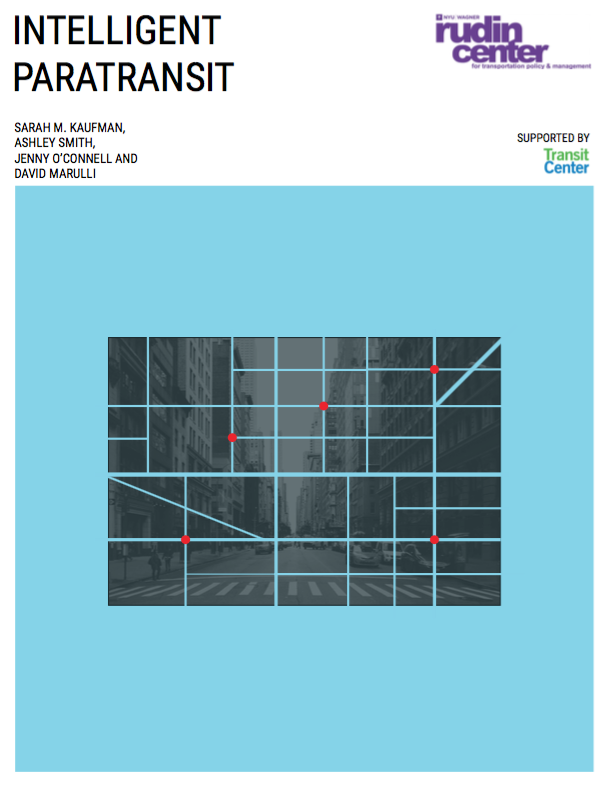Intelligent Paratransit
As Americans aged 65 or older increase from fifteen to twenty percent of the population by 2030, cities across the United States will face a transportation crisis. Urban residents who are physically unable to use public transportation, including the disabled and mobility-impaired elderly, are offered paratransit services. These paratransit systems, as required by an unfunded 1990 Americans with Disabilities Act mandate, are enormous, and growing annually in new applications and budget requirements.
Paratransit demand is growing nationwide and costs continually increase (now $5.2 billion nationwide); the user experience is often reported as poor. To address efficiency and user experience, this report assesses the state of paratransit, analyzes innovative solutions in three cities and recommends potential technological solutions. The Intelligent Paratransit Technological Upgrade Framework includes improvements in the areas of Onboarding, Reservations, Dispatch & Routing and User Experience.
By applying new technological systems to a 26 year-old mandate, paratransit services can be made more efficient and provide a better customer experience. In New York City, these upgrades could save the agency up to $133 million per year. Improving mobility solutions for the elderly and disabled is possible, necessary and urgent.
